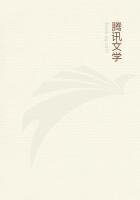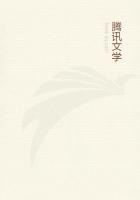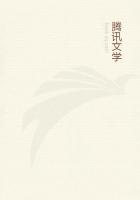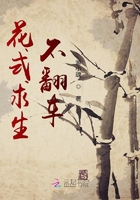hispidus), a smaller flowered runner, slender and weakly prickly as to its stem, and insignificant and sour as to its fruit.Its greatest charm is when we come upon it in some low meadow in winter, when its still persistent, shining, large leaves, that have taken on rich autumnal reds, glow among the dry, dead weeds and grasses.
CREEPING DALIBARDA
(Dalibarda repens) Rose family Flowers - White, solitary, or 2 at end of a scape 2 to 5 in.
high.Calyx deeply, unevenly 5 or 6 parted, the larger divisions toothed; 5 petals falling early; numerous stamens; 5 to 10carpels forming as many dry drupelets within the persistent calyx.Stem: Creeping, slender, no prickles.Leaves: Long petioled, in tufts from the runner, almost round, heart-shaped at base, crenate-edged, both sides hairy.
Preferred habitat - Woods and wooded hillsides.
Flowering Season - June-September.
Distribution - Nova Scotia to Pennsylvania, and westward to the Mississippi.
This delicate blossom, which one might mistake for a white violet among a low tuft of violet-like leaves, shows its rose kinship by its rule of five and its numerous stamens.Like the violet again, however, it bears curious little economical flowers near the ground - flowers which never open, and so save pollen.These, requiring no insects to fertilize them, waste no energy in putting forth petals to advertise for visitors.Nevertheless, to save the species from degeneracy from close inbreeding, this little plant needs must display a few showy blossoms to insure cross-fertilized seed; for the offspring of such defeats the offspring of self-fertilized plants in the struggle for existence.
VIRGINIA STRAWBERRY
(Fragaria Virginiana) Rose family Flowers - White, loosely clustered at summit of an erect hairy scape usually shorter than the leaves.Calyx persistent in fruit, deeply 5-cleft, with 5 bracts between the divisions; 5 petals;stamens and pistils numerous, the latter inserted on a cushion-like receptacle becoming fleshy in fruit.Staminate and pistillate flowers, from separate roots.Stem: Running, and forming new plants.Leaves: Tufted from the root, on hairy petioles 2 to 6 in.tall, compounded of 3 broadly oval, saw-edged leaflets.Fruit.An ovoid, glistening red berry, the minute achenes imbedded in pits on its surface.Ripe, June-July.(Latin, fragum = fragrant fruit, the strawberry.)Preferred Habitat - Dry fields, banks, roadsides, woodlands.
Flowering Season - April-June.
Distribution - New Brunswick to the Gulf of Mexico, and westward to Dakota.
"Doubtless God could have made a better berry, but doubtless God never did." Whether one is kneeling in the fields, gathering the sun-kissed, fragrant, luscious, wet scarlet berries nodding among the grass, or eating the huge cultivated fruit smothered with sugar and cream, one fervently quotes Dr.Boteler with dear old lzaak Walton.Shakespeare says : "My lord of Ely, when I was last in Holborn, I saw good strawberries in your garden there." Is not this the first reference to the strawberry under cultivation?
Since the time of Henry V, what multitudes of garden varieties past the reckoning have been evolved from the smooth, conic EUROPEAN WOOD STRAWBERRY (F.vesca) now naturalized in our Eastern and Middle States, as well as from our own precious pitted native! Some authorities claim the berry received its name from the straw laid between garden rows to keep the fruit clean, but in earliest Anglo-Saxon it was called streowberie, and later straberry, from the peculiarity of its straying suckers lying as if strewn on the ground; and so, after ****** due allowance for the erratic, go-as-you-please spelling of early writers, it would seem that there might be two theories as to the origin of the name.
Since the different ***es of these flowers frequently occur on separate plants, good reason have they to woo insect messengers with a showy corolla, a ring of nectar, and abundant pollen to be transferred while they are feasted.Lucky is the gardener who succeeds in keeping birds from pecking their share of the berries which, of course, were primarily intended for them.In English gardens one is almost certain to find a thrush or two imprisoned under the nets so futilely spread over strawberry beds, just as their American cousin, the robin, is caught here in June.
A young botanist may be interested to note the difference in the formation of the raspberry or blackberry and the strawberry: in the former it is the carpels (ovaries) that swell around the spongy receptacle into numerous little fruits (drupelets) united into one berry, whereas it is the cushion-like receptacle itself in the strawberry blossom that swells and reddens into fruit, carrying with it the tiny yellow pistils to the surface.
The NORTHERN WILD STRAWBERRY (F.Canadensis), with clusters of elongated, oblong little berries delightful to three senses, comes over the Canadian border no farther south than the Catskills.Nearly all strawberry plants show the useless but charming eccentricity of bursting into bloom again in autumn, the little white-petaled blossoms coming like unexpected flurries of snow.
No one will confuse our common, fruiting species with the small, yellow-flowered DRY or BARREN STRAWBERRY (Waldsteinia fragarioides), more nearly related to the cinquefoils.Tufts of its pretty trefoliate leaves, sent up from a creeping rootstock, carpet the woods and hillsides from New England and along the Alleghanies to Georgia, and westward a thousand miles or more.
Flowers in May and June.
WHITE AVENS

